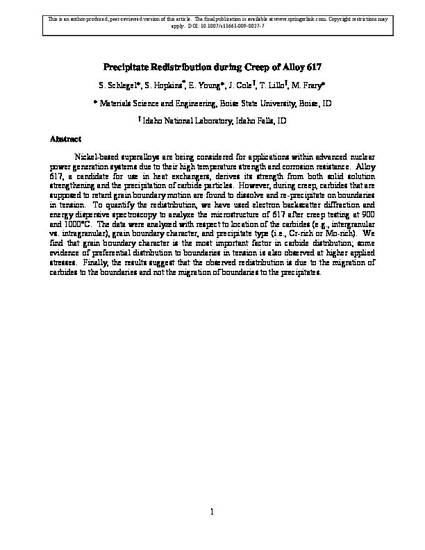
Nickel-based superalloys are being considered for applications within advanced nuclear power generation systems due to their high temperature strength and corrosion resistance. Alloy 617, a candidate for use in heat exchangers, derives its strength from both solid solution strengthening and the precipitation of carbide particles. However, during creep, carbides that are supposed to retard grain boundary motion are found to dissolve and re-precipitate on boundaries in tension. To quantify the redistribution, we have used electron backscatter diffraction and energy dispersive spectroscopy to analyze the microstructure of 617 after creep testing at 900 and 1000°C. The data were analyzed with respect to location of the carbides (e.g., intergranular vs. intragranular), grain boundary character, and precipitate type (i.e., Cr-rich or Mo-rich). We find that grain boundary character is the most important factor in carbide distribution; some evidence of preferential distribution to boundaries in tension is also observed at higher applied stresses. Finally, the results suggest that the observed redistribution is due to the migration of carbides to the boundaries and not the migration of boundaries to the precipitates.
This is an author-produced, peer-reviewed version of this article. The final publication is available at www.springerlink.com. Copyright restrictions may apply. DOI: 10.1007/s11661-009-0027-7
Available at: http://works.bepress.com/megan_frary/25/
